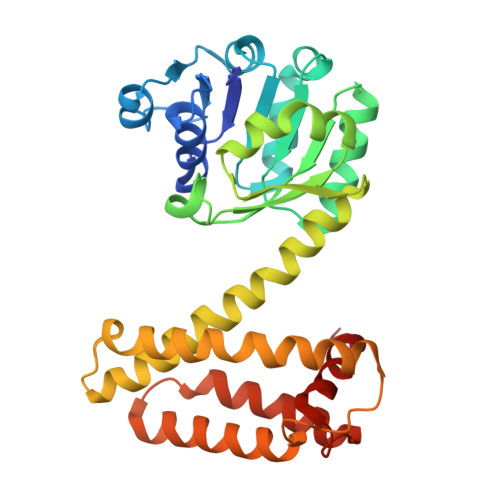Engineered Biocatalyst for Enantioselective Hydrazone Reduction.
Hutton, A.E., Zhao, F., Ho, E., Domenech, J., Harawa, V., Brown, M.J.B., Grogan, G., Clayman, P.D., Turner, N.J., Green, A.P.(2025) Angew Chem Int Ed Engl 64: e202424350-e202424350
- PubMed: 40244857
- DOI: https://doi.org/10.1002/anie.202424350
- Primary Citation of Related Structures:
9H4F - PubMed Abstract:
Enantioselective reduction of hydrazones provides a convergent and versatile route to synthesize hydrazine-containing motifs that are commonly found in pharmaceuticals and agrochemicals. However, current methods require the use of precious metals, costly chiral ligands, and/or forcing reaction conditions. Here, we report the development of a biocatalytic approach for enantioselective hydrazone reduction using engineered imine reductases. Following evaluation of an in-house panel of >400 IRED sequences, we identified a single IR361 I127F L179V variant that promotes reduction of Cbz-protected hydrazones. The introduction of additional two mutations via directed evolution afforded HRED1.1 that is 20-fold more active than the parent template and promotes reduction of a variety of protected hydrazones in high yields and selectivities (>99% e.e.), including in preparative scale biotransformations. Structural analysis of HRED1.1 provides insights into the origins of its unique hydrazone reductase activity. This study offers a powerful biocatalytic route to synthesize valuable chiral hydrazine products and further expands the impressive range of transformations accessible with engineered imine reductases.
- Manchester Institute of Biotechnology and Department of Chemistry, University of Manchester, 131 Princess Street, Manchester, M1 7DN, UK.
Organizational Affiliation:

















